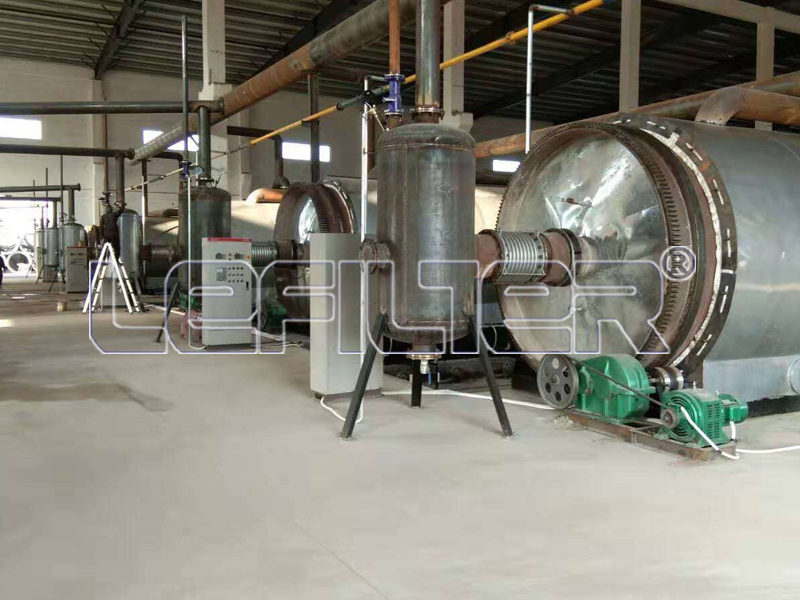How to refine waste tires into oil?
In recent years, with the continuous increase in the number of cars, the amount of waste tires produced in China has increased rapidly at an annual rate of 8%-9%. The resulting environmental pollution, waste of resources and safety hazards have also become more prominent, especially for waste tires. The problem of "secondary pollution" caused by processing technology and equipment in the process of comprehensive utilization has become a problem that needs to be solved urgently in the development of circular economy in China. Now that we face this problem, we already have a good solution. For example, if we use environmentally friendly industrial technology to refine it into oil and reuse it, then how exactly are waste tires refined into oil?
The current comprehensive utilization of waste tires mainly include: tire retreading, reclaimed rubber, rubber powder and thermal cracking. Among them, passenger car tires, which account for nearly half of the waste tires, have extremely low utilization value for the reclaimed rubber and rubber powder industries, so they can only be treated by the standardized thermal pyrolysis method encouraged by the state; and the rubber products are recycled after 2-3 times. Can no longer be used to produce rubber products. Thermal pyrolysis is the ultimate treatment method for waste tires to "eat dry and squeeze out". In particular, the complete set of thermal pyrolysis technology that can achieve continuous production under safe and environmentally friendly conditions is an important method for tire recycling and direction.
Thermal cracking is the use of high temperature to heat waste tires to promote their decomposition into oil, combustible gas, and carbon powder. The oil obtained by thermal cracking has similar characteristics to commercial fuel oil. It can be used for direct combustion or mixed with petroleum-derived fuel oil. It can also be used as a rubber processing softener; the resulting combustible gas is mainly composed of hydrogen and methane, which can be used as fuel , It can also be burned on-site for the needs of the decomposition process; the obtained carbon powder can be used instead of carbon black, or processed into a special adsorbent. This kind of adsorbent has a very strong filtering effect on water pollution, especially mercury and other toxic metals. In addition, pyrolysis products include scrap steel wire.
Data shows that 45% of waste tires can be converted into fuel after being treated by thermal cracking technology. And after deep processing, these fuels can replace petroleum. At present, the annual output of waste tires in my country exceeds 300 million, and the weight exceeds 13 million tons. The output of fuel oil produced after cracking is equivalent to China's fourth largest oil field.
As an emerging technology, pyrolysis technology is completely different from the previous treatment methods of solid waste from workers. It abandons the high-pollution and high-energy consumption model, and brings about a huge change in the development of related industries. Use waste tires and plastic garbage to regenerate resources, promote the recycling of resources, and provide support for the concept of forest city and sponge city.
Regardless of the simple principle of tire cracking, it is believed that success can be created with equipment. If you want to refine oil, you need to consider comprehensive, thoughtful, investment funds, whether you can perform an environmental assessment, whether the equipment is safe, whether it causes pollution to the environment, etc. These are all issues to be considered. Lifeierte Shangqiu Branch can not only provide you with production equipment, but also help you solve technical problems and design solutions.
For more inquiries, please contact: +8617339097080.
 Mobile/Wechat/Whatsapp:+86-13523737997
Mobile/Wechat/Whatsapp:+86-13523737997
 Email:recycling@lefilter.com
Email:recycling@lefilter.com 












